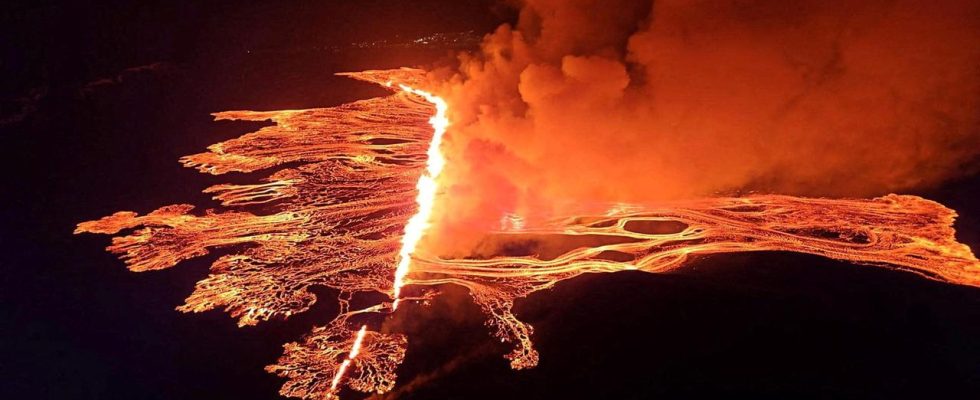And the earth is breathing fire again: It’s been five weeks since the last volcanic eruption in Iceland, and now another eruption is being reported in the southwest of the country. Several hundred people were evacuated.
For the fourth time in four months, a volcano has erupted in the same region of Iceland. The bright red eruption near the coastal town of Grindavík could be seen from the northeastern capital Reykjavik, photos on the website of broadcaster RÚV showed.
The Blue Lagoon thermal spa, which is popular with tourists and located near Sylingarfell, had to be evacuated. Around 700 people were brought to safety. A few residents who had since returned to Grindavík were also supposed to be taken out of the city again to be on the safe side. They had to leave Grindavík after the last eruption five weeks ago. There is currently no danger to people, it said. Meanwhile, rescue workers warned tourists not to travel to the region.
3.5 kilometer long fissure in the earth
Scientists tried to get an idea of the situation from a helicopter. The eruption was again announced by strong seismic activity. Experts counted about 80 earthquakes. According to experts, the length of the crack in the earth is around 3.5 kilometers long. Geophysicist Magnús Tumi Guðmundsson described the latest eruption as the strongest to date on broadcaster RUV.
Grindavík is located on the Reykjanes Peninsula around 55 kilometers southwest of Reykjavik. There have now been four volcanic eruptions on the peninsula since mid-December, and in one in January the lava even covered three houses on the northern foothills of the town of 3,700 residents. The future of the community is uncertain. The government has already presented a draft law. This stipulates that residents can sell their residential property to a state-owned company.
With more than 30 active volcanic systems, Iceland is the largest and most active volcanic region in Europe. The island nation in the North Atlantic lies on the so-called Mid-Atlantic Ridge, which separates the Eurasian and North American plates.

